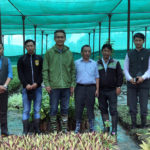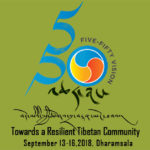in 2016, SARD’s planning department and the Department of Home introduced a participatory approach to community development in Tibetan settlements intended to ensure livelihoods strategies meet community-specific needs and challenges, improve inter-sectoral integration, and increase sustainability through stronger local ownership of program investments and outcomes.
During Participatory Needs Assessment (PNA) meetings community members identify self-perceived local development needs and priorities. Based on the nature of local needs and priorities identified through the PNA process, DOH and SARD assemble teams to visit each settlement to conduct technical and cost analyses of community-identified investments. Following site visits community-driven integrated settlement development plans (CD-ISDP) are being developed for the settlement. CD-ISDPs will be created for as many Tibetan settlements as possible in stages over the five-year period of the TSRR Program (2017-2021). In year one the PNA process was introduced in four pilot settlements in India and one in Nepal, after which CD-ISDP tools and guidelines will be reviewed and revised based on practical lessons learned, to ensure the methodology is as effective and locally appropriate as possible. Each CD-ISDP will be reviewed for adjustment and updated as needed.
It is expected that increased community participation in needs assessment and planning will significantly improve the quality of CTA project identification, planning, and implementation at the local level. Beneficiaries and community stakeholders are expected to feel greater ownership of CTA and donor-supported initiatives and to become more actively involved in ensuring successful outcomes, cost effectiveness, and long-term sustainability of investments they have participated in identifying and prioritizing themselves. The new approach is also expected to increase CTA capacity for effective development planning, resulting not only in better use of community resources in the immediate term and beyond, but increased self-reliance of Tibetan communities over the long term.





